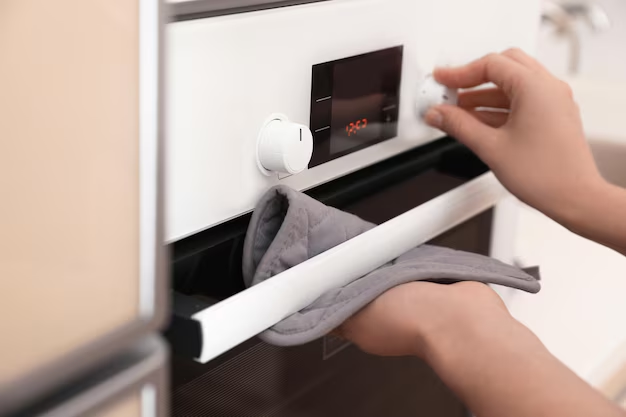Optimal Temperatures for Your Refrigerator and Freezer: A Complete Guide
Keeping your food fresh and safe is a top priority in any kitchen, and setting the correct temperatures for your refrigerator and freezer is a crucial part of this process. A correctly set appliance not only ensures the longevity and quality of your food but also plays a significant role in energy efficiency. But what are the right temperatures, and why do they matter so much? Let's delve into the ideal settings for your refrigerator and freezer, exploring the intricacies of temperature control and offering practical tips to maintain optimal conditions. 📏❄️
Why Temperature Matters
The Science Behind Food Safety
Understanding the science behind food safety helps highlight why temperature controls are so crucial. Bacteria are the primary culprits in food spoilage, and they thrive in warm environments. The danger zone, which ranges from 40 to 140 degrees Fahrenheit (4.4 to 60 degrees Celsius), is where rapid bacterial growth occurs. Keeping your refrigerator and freezer at proper temperatures helps prevent food from entering this risk area.
Energy Efficiency and Cost Savings
Beyond food safety, proper temperature settings contribute to energy efficiency. Running your appliances at consistently low temperatures can lead to excessive energy consumption, while settings that are too high would compromise food safety. Achieving the balance ensures that you save on energy costs without sacrificing the quality of your food.
Ideal Temperature Settings
Refrigerator Basics
For most refrigerators, the sweet spot is around 37 to 40 degrees Fahrenheit (about 3 to 4 degrees Celsius). This range effectively slows down bacterial growth while keeping your perishables fresh for as long as possible without freezing them.
Freezer Fundamentals
Freezers should be set to 0 degrees Fahrenheit (-18 degrees Celsius) to maintain food safety and quality. At this temperature, bacterial activity is halted, preserving your frozen goods for extended periods.
Quick Tips for Monitoring
- Thermometers: Use refrigerator and freezer thermometers to ensure they remain at the optimal temperature.
- Digital Displays: If your appliance has a digital display, check it regularly to make sure your settings haven’t been altered.
- Doors Closed: Minimize the time refrigerator and freezer doors are open to maintain temperature consistency.
Factors Influencing Temperature
Load and Air Circulation
The amount of food stored can influence how your appliance maintains its temperature. Overloading, especially obstructing air vents, can lead to uneven cooling. Always allow space for air to circulate freely.
Ambient Room Temperature
The room's temperature can affect how hard your appliance must work to maintain its interior environment. In hot climates, maintain sufficient airflow around the appliance and avoid placing it near heat sources.
Appliance Age and Maintenance
Older appliances or those poorly maintained may struggle to hold temperatures consistently. Regularly clean and service your refrigerator and freezer to ensure they function optimally.
Enhancing Appliance Efficiency
Regular Maintenance Checklist
- Clean Coils: Dust and grime can accumulate on the refrigerator coils, reducing efficiency. Clean them every six months.
- Seal Check: Inspect gaskets and seals for wear and tear to ensure airtight closure.
- Defrost: Regularly defrost your freezer if it isn’t frost-free. Ice buildup can affect temperature regulation.
Placement Tips
- Optimal Spacing: Leave a gap between the appliance and the wall to enhance airflow.
- Shaded Location: Avoid placing your fridge or freezer in direct sunlight or near ovens and heaters.
Smart Usage
- Cooling Hacks: Pre-chill drinks and only store cooled leftovers.
- Section Order: Know where different foods should be stored according to their required temperature to add to the efficiency.
Troubleshooting Common Temperature Problems
Inconsistent Temperatures
If you find your appliance struggling to maintain a steady temperature, check vents for blockages, and seals for any air leaks. Beyond this, consider the age and capacity of the appliance, which might indicate it’s time for an upgrade.
Frost Build-Up
Frost can be indicative of improper seals or doors being left open too long. Address these issues and consider using the defrost function regularly.
Appliance Not Cooling
Check if your appliance is properly plugged, the thermostat settings are accurate, and if there are electrical circuitry issues requiring professional assistance.
Practical Summary of Key Points 🔍✨
Here's a quick guide to managing your refrigerator and freezer for optimal performance:
- Refrigerator Temperature: Aim for 37 to 40°F (3 to 4°C). 🌡
- Freezer Temperature: Keep it at 0°F (-18°C). ❄️
- Air Circulation: Don’t overcrowd; allow space for air. 🌀
- Regular Maintenance: Keep coils clean, check seals, and defrost as necessary. 🧼🔧
- Smart Placement: Avoid direct sunlight and keep good ventilation around. 🪟
- Monitor Settings: Use a thermometer and adjust settings occasionally to deal with environmental changes. 🧭
By understanding and managing these elements effectively, you can ensure your refrigerator and freezer not only protect your food but also contribute to an efficient and environmentally friendly kitchen. Correct temperature settings are pivotal to enhancing both the longevity of your food and the lifespan of your appliances, saving you time and money in the long run.
